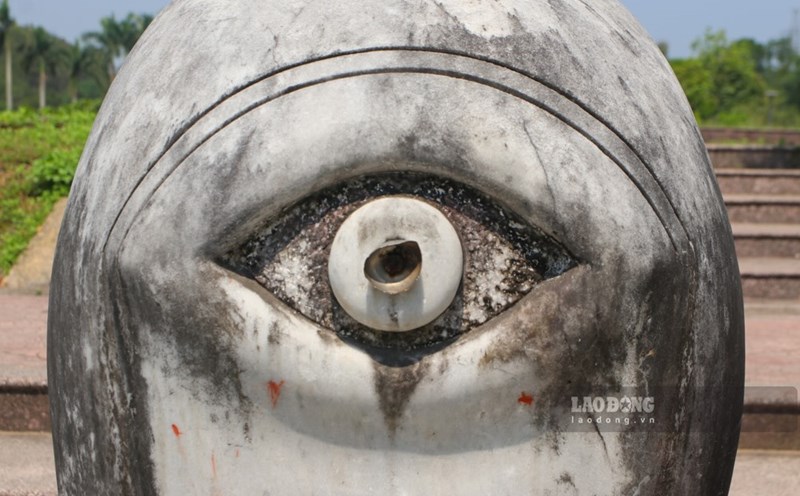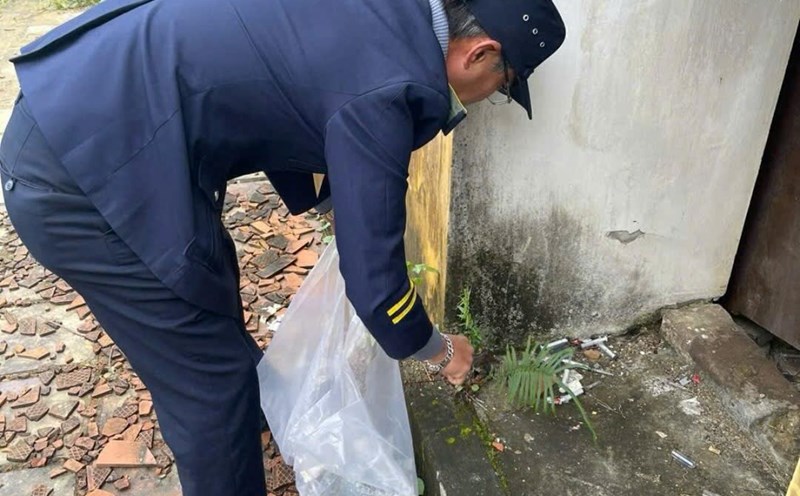Two Hue monuments bells
In early 2025, Hue has 4 treasures recognized as national treasures, including the Ngo Mon bell placed on Ngu Phung tower, leading to the entrance to the Hue Royal Palace.
The Ngo Mon bell is the only one cast to be placed at the southern main gate of the Hue Imperial Citadel - where important administrative activities take place and is considered a symbol of the feudal dynasty.
Not only does it have historical value, the bell is also a typical work of art of sculpture, painting and bronze casting during the Minh Mang Dynasty (1820-1841). Under the Nguyen Dynasty, bronze bells were associated with royal rituals and were specifically recorded by Quoc Su Quan in Dai Nam Thuc Luc for their shape, quantity, location and use depending on each ceremony.
The beauty of the Ngo Mon bell is the pattern arrangement by highlighting the theme of the illustration and the model rings running across with beautiful models such as quintessence, generals, and flowers.
When mentioning the Nguyen Dynasty bell in Hue, it is impossible not to mention the General Great Red Cross in Quoc Tu Thien Mu located on Ha Khe hill towards the poetic Huong River. The bell was cast during the reign of King Nguyen Phuc Chu (170 AD) to worship the throne, weighing more than 2,000kg and was recognized as a national treasure in 2013.
If the Ngo Mon bell is a symbol of the Nguyen Dynasty, the bell of Thien Mu Pagoda is associated with the symbol of Buddhism during the Nguyen Lords.
According to Prof. Dr. Trinh Sinh ( Academy of Sciences and Social Affairs), not only does it have many meanings, Thien Mu bell is also a bell with many artistic elements.
The bell has a round cylinder, the lower part of the aneurysm, consists of three parts: straps, body and mouth. The bell strap is a two -dragon statue (Bodhi) fighting back, legs clinging to the top of the bell, bent body, back with lotus. Beard, eye, fins, back and dragon legs are carved exquisitely. The bell body decorates the horizontal and vertical ledges, creating continuous pattern rims from the top down.
Mr. Sinh commented: "The bell at the same time reached the pinnacle of art, especially the bell in the ancient capital of Hue - where Dai Nam's power was concentrated and skilled workers from many bronze casting villages across the country converged".
Unique cultural and religious symbols
Researching on Nguyen simultaneous bell, Associate Professor, Dr. Nguyen Thi Phuong Thao and Dr. Trinh Thi Ha (Central University of Art Pedagogy) believe that it is one of the unique and important cultural heritages of Vietnam, bearing the strong imprint of Buddhist philosophy and rituals. However, preserving and promoting the value of the bell at the same time Nguyen is facing many challenges, requiring timely solutions to preserve the precious cultural heritage for future generations.
To do this, it is necessary to closely coordinate between the government, experts and the community in developing a conservation strategy.
Conserving and promoting the value of Nguyen Dynasty bell not only enriches national cultural identity but also affirms Vietnam's position on the world cultural map, two experts from the Central University of Art Education commented.












